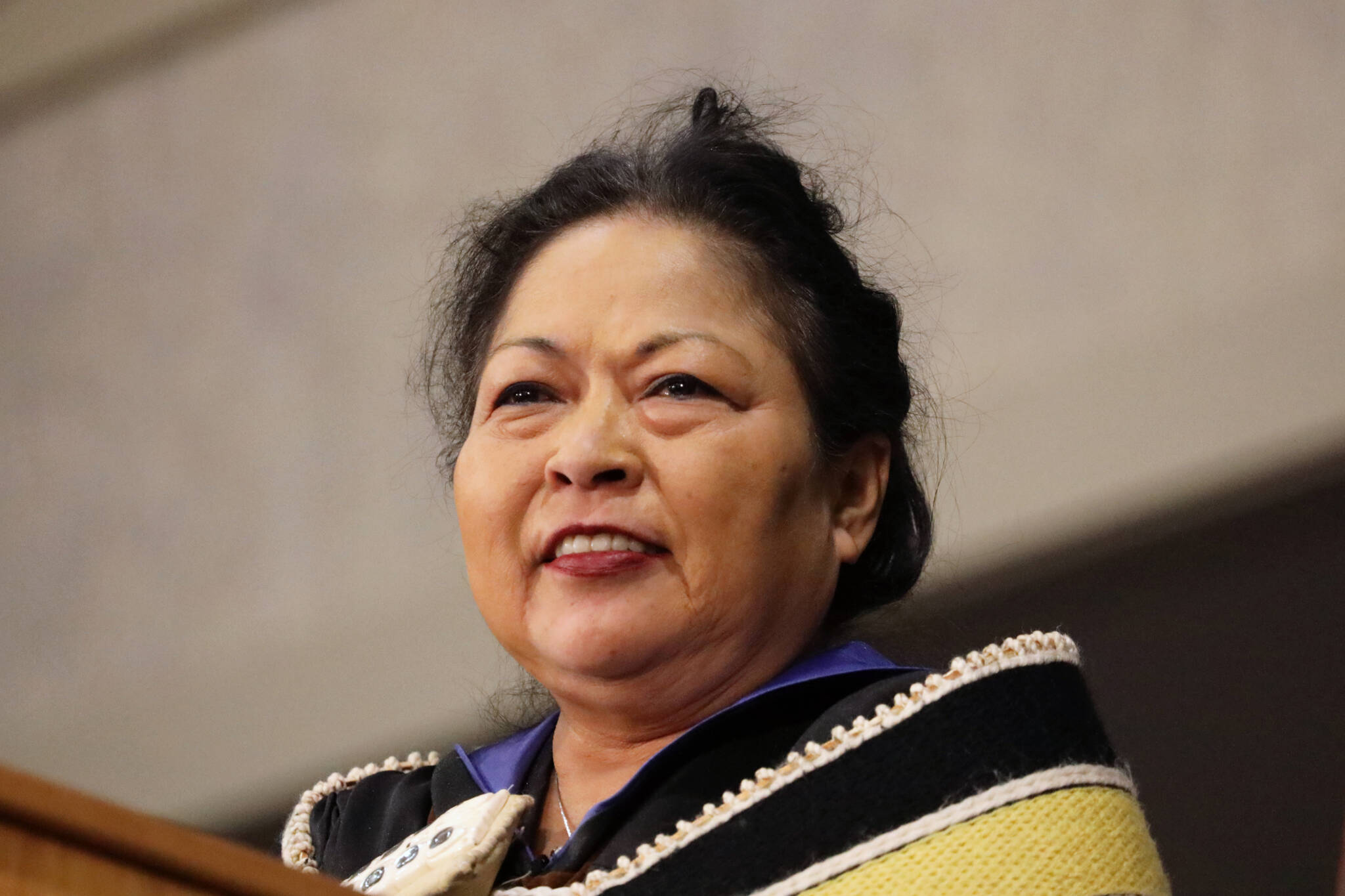At just four years old Anna Brown Ehlers already knew she was destined to become a Chilkat weaver.
“It’s all I ever wanted to do, I used to dream about it when I was little,” she said in an interview Friday morning.
Now as an adult, Ehlers — who was born and raised in Juneau — is known across Alaska and the nation as one of the few master Chilkat weavers that exist today. On Wednesday she was named the Rasmuson Foundation’s 2023 Distinguished Artist, an honor paired with a $50,000 award to recognize her accomplishments and dedication to the craft. She received the top award from the foundation, alongside 36 other Alaska artists who received recognition.
Chilkat weaving is known as one of the most complex weaving techniques in the world and in recent years was considered to be an endangered art practice, according to the Sealaska Heritage Institute. The process of the iconic Indigenous art form is not only learning the skills to create a piece, but also obtaining the materials traditionally used, mountain goat wool and yellow cedar bark, is extremely intricate and time-consuming.
Ehlers recently spent over a month harvesting yellow cedar bark for upcoming projects before she was named with the honor earlier this week.
“The best time to get the yellow cedar bark is two weeks after the herring have finished spawning,” she said. “That’s when the sap is the lowest.”
Ehlers said she is grateful for the award, and what its support means for her mission to share and grow the craft to the next generation of artists. She’s received many awards and accolades throughout her decades-long career, including being named a National Endowment for the Arts National Heritage Fellow in 2017, and recognized by the University of Alaska Southeast with an honorary Doctorate of Fine Arts, an honor bestowed to people in the community who exemplify a significant and lasting contribution to the university, to the state of Alaska, or to the individual’s discipline or profession.
“I am insanely grateful that I was born where I was, when I was, into this culture — I’m lucky to represent our people,” she said. “This is going to help me to continue in my work, absolutely. It’s going to help me greatly and I didn’t think it would ever happen.”
Ehlers recalled the moment she first saw a Chilkat robe and the impact it had on the trajectory of her life. The robe was worn by her uncle, Roy Brown, during a Fourth of July parade in 1969.
“When I saw it as my mom was holding my hand, I almost felt like bubbling over, you know, because I was like, ‘Oh, that’s so beautiful. I want that. I like that,’” she said.
Though she was drawn to the craft at a young age, it wasn’t until later in life did she fully commit to it as her life’s work — a decision that came with a lot of sacrifices, but one she said she has never regretted. She said being an artist is just something that’s in her blood.
“The entire family does art — we’ve got totem pole carvers, jewelry makers and moccasin makers. I teach people Chilkat weaving and there’s a lot of people in our family that are doing the art,” she said.
That’s one of her goals after more than 30 years of doing the craft — to continue to share her knowledge with young artists as her late teacher, Jennie Thlunaut, did for her.
“I feel like my responsibility is Jennie who told me ‘I’m not going to leave you without my knowledge, I’m going to pass it on’ and so that’s what I have done since 1985,” she said. “I’ve taught at workshops at heritage centers, I’ve demonstrated in the Smithsonian Institute, New York Museum of American Indian, Los Angeles County Museum. So many other places.”
Multiple other Southeast artists were honored with Rasmuson awards alongside Ehlers. Artists who receive awards include Robert K. Mills, of Kake, who received a $25,000 fellowship award toward a one-year project to work with Kake residents, the Forest Service and mill owners to construct Kake’s first traditional Tlingit tribal house in more than 100 years.
Shgendootan George, of Angoon, received a $25,000 fellowship award toward a one-year project to create a series of four dance robes in distinct styles — Ravenstail, button blanket, cedar bark and Chilkat — to tell the history of the 1882 Navy bombing of Angoon.
Juneau multimedia artist Lyndsey Brollini, and poets Mistee St. Clair and Emily Wall were awarded $10,000 project awards granted to “support emerging, mid-career and established artists in specific, short-term projects.”
• Contact reporter Clarise Larson at clarise.larson@juneauempire.com or (651)-528-1807.

